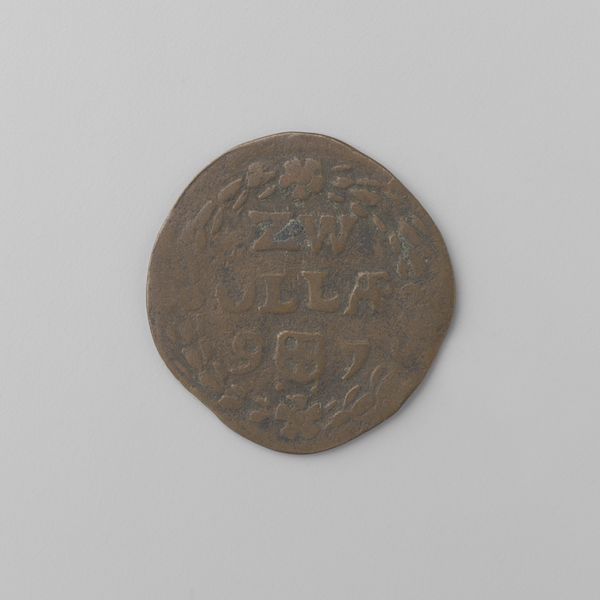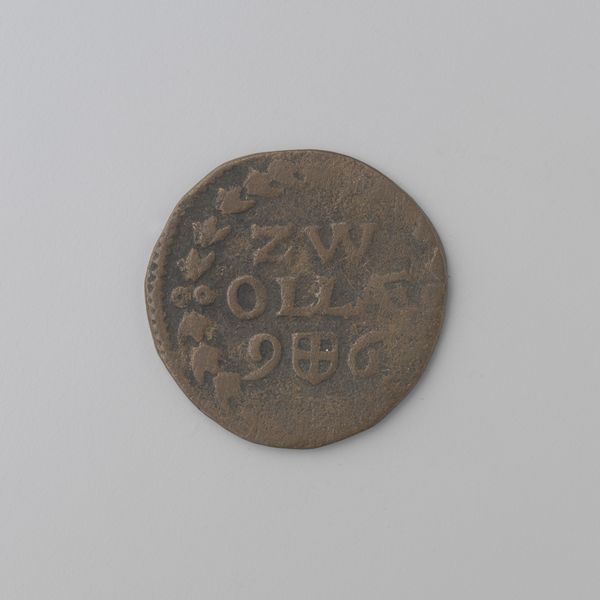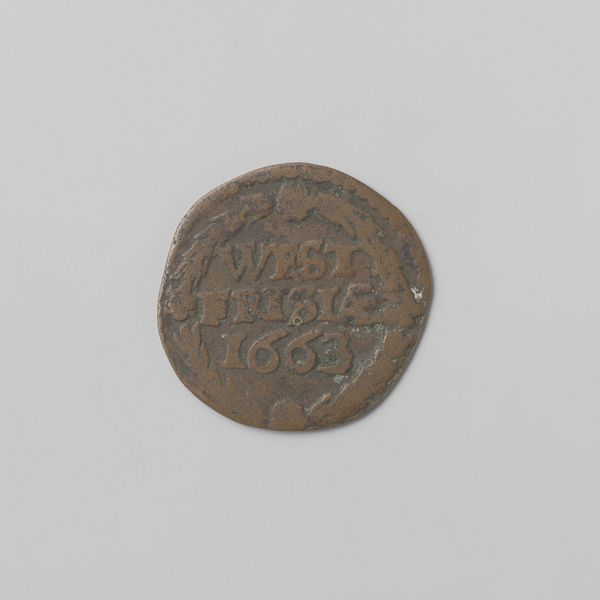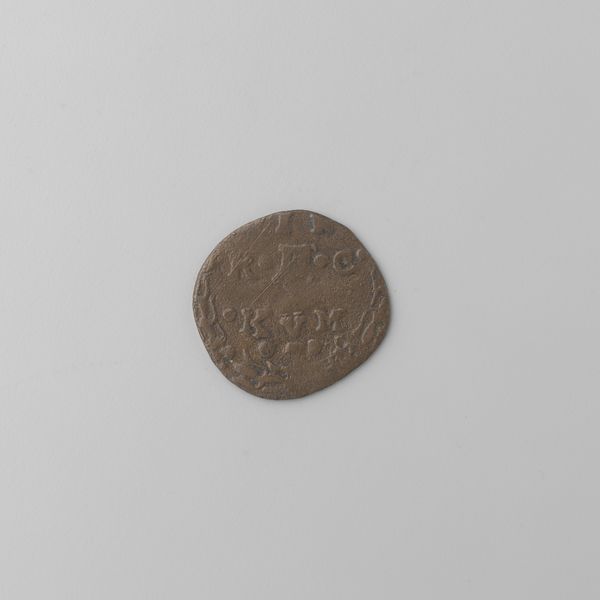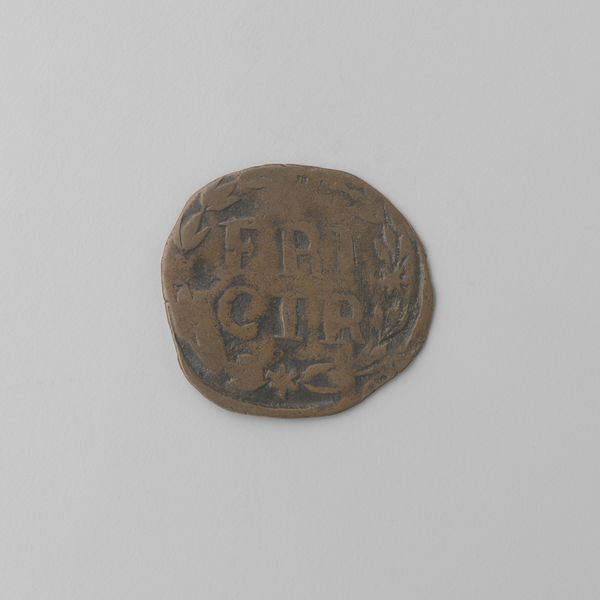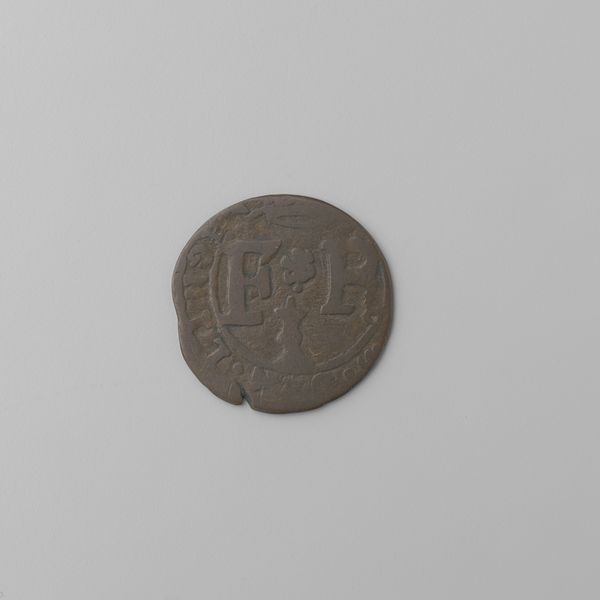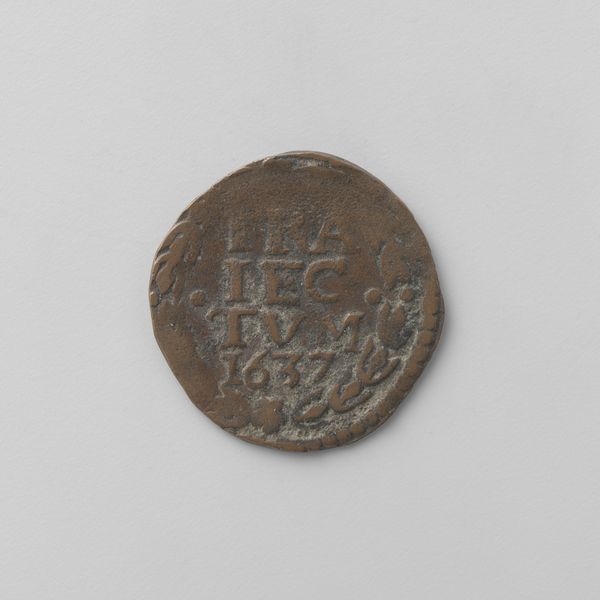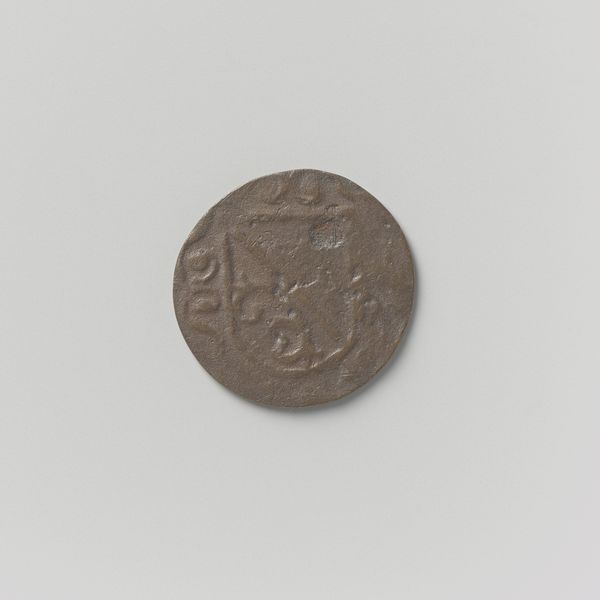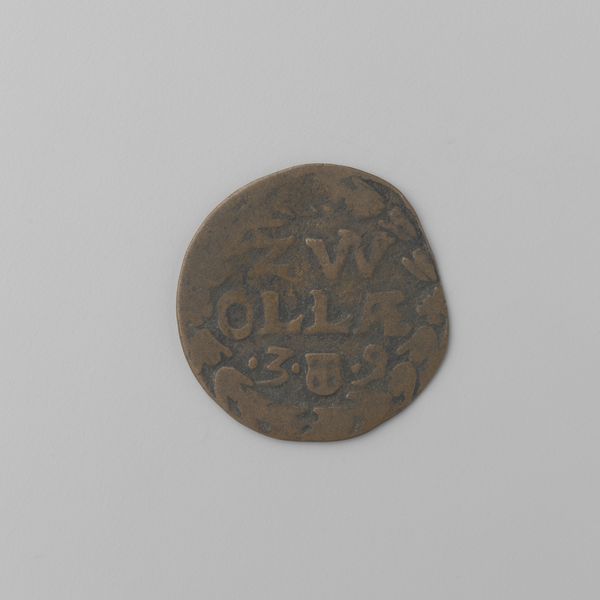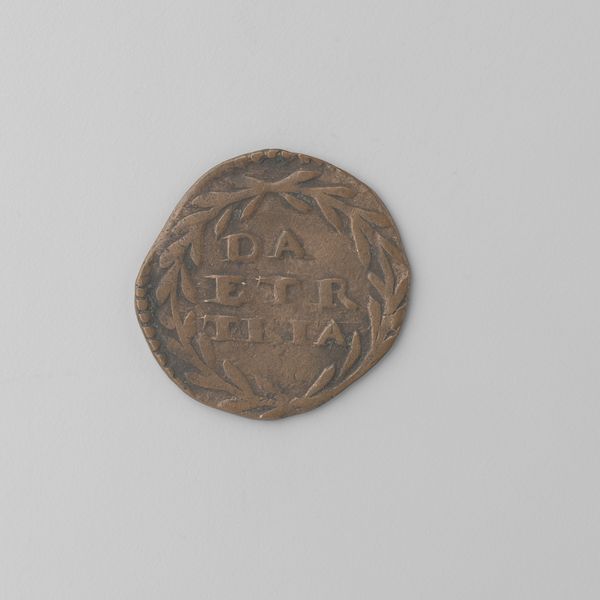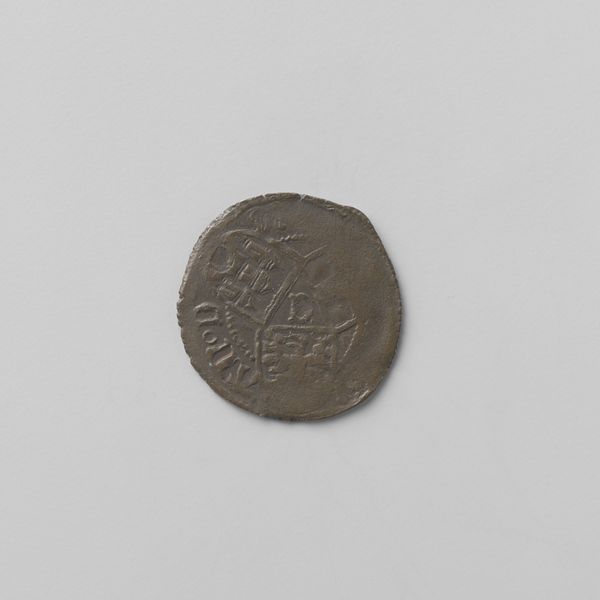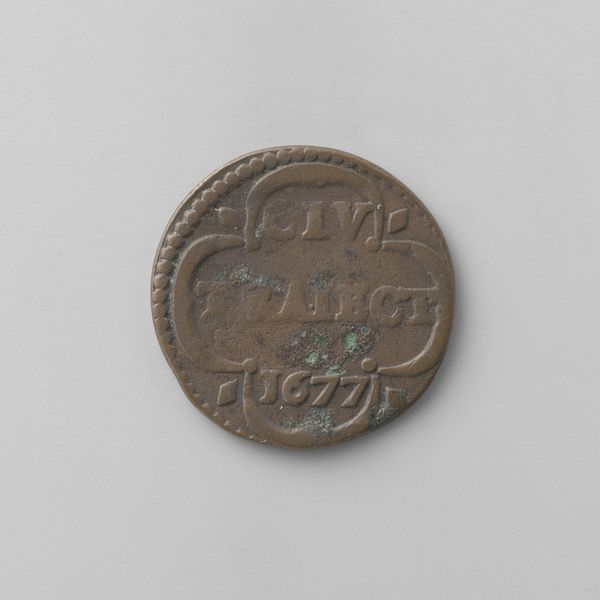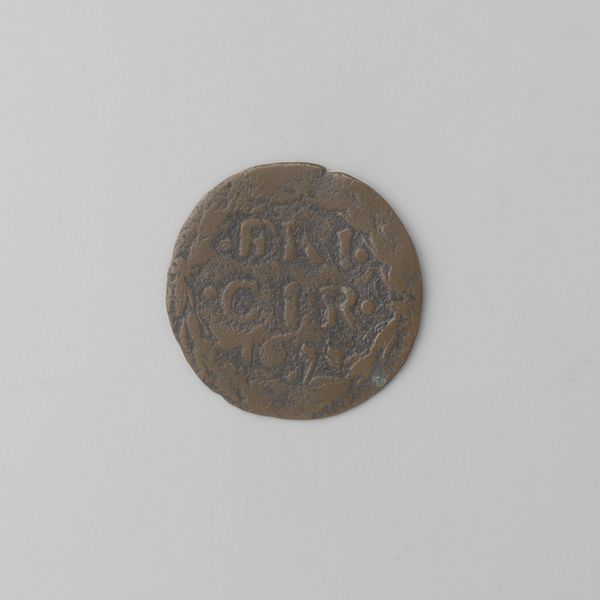
metal
#
metal
#
ancient-mediterranean
#
coin
Dimensions: diameter 2.2 cm, weight 2.06 gr
Copyright: Rijks Museum: Open Domain
Editor: This is "Duit van de stad Utrecht," a metal coin dating back to between 1657 and 1689, representing the city of Utrecht. The wear and tear are pretty visible. How would you analyze this piece, focusing on its visual qualities? Curator: The piece presents a fascinating study in contrasts. The circular form, typical of coinage, provides an immediate structure. Within this, observe the tension between the raised lettering, the coat of arms, and the flat, worn fields surrounding them. The varying depths and patinas created by wear contribute to the visual complexity, disrupting what would have been an originally uniform surface. Notice the implied lines connecting the elements: do they create a harmonious balance, or do they clash? Editor: It seems less about harmony and more about functionality. I mean, it's a coin, right? Curator: Precisely! Its function informs its form. But consider how the design choices – the size of the lettering, the placement of the arms – either enhance or detract from its purpose. Look at the lines again; notice the deliberate incuse design meant to deter counterfeiting. Function is inextricably linked with formal execution. Does the damaged area also contribute to a new meaning? Editor: Well, it shows its age, it speaks of history. Now I see that it goes beyond its function. Thank you for helping me think about this coin’s visual form. Curator: It illustrates the point perfectly, the formal considerations of what appears simple still hold significant intellectual value. A deep analysis provides meaningful revelations of intent, form, and context.
Comments
No comments
Be the first to comment and join the conversation on the ultimate creative platform.
